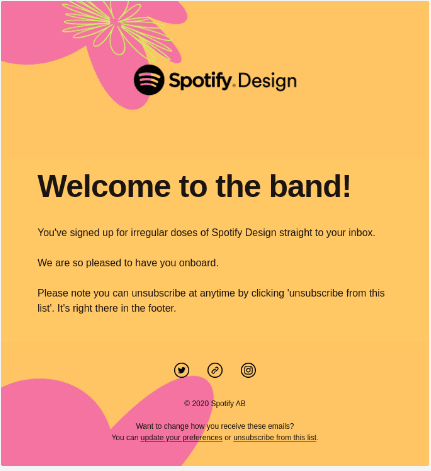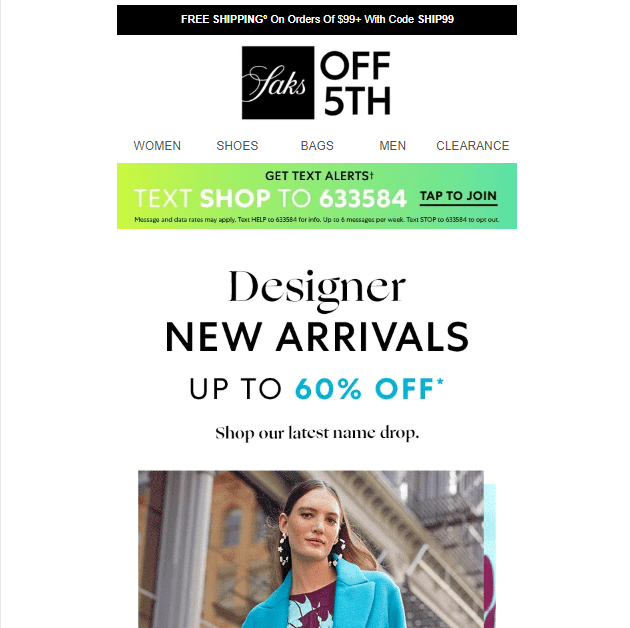It seems as though automation is at the forefront of almost all business growth nowadays — and for good reason. By automating specific tasks, a company can free up essential workers to take on larger roles. Businesses can save money, streamline processes and fight back against employee burnout. Maybe you’re already utilizing automation in different areas of your business, but you could be missing out on one of the simplest — yet most effective uses — email automation.
READ: Email Drip Campaigns — 3 Examples and Best Practices To Boost Customer Engagement
By unleashing the power of email automation for your business, you’ll streamline workflows, reduce human error, free up employees and enhance both productivity and efficiency within the workplace.
The best part? Thanks to the popularity of automation services today, harnessing the capabilities of automated email systems is easier than ever. Let’s take a look at some of the advantages.
Why automation is essential for growth
In today’s tech-forward society, automation isn’t just an effective strategy — it’s a necessary one. Some of the greatest benefits of automating specific tasks include:
- Continued growth
- Enhanced productivity
- Limited costs
- Improved communication
- Fewer errors
Often, you can also expect a profit increase by automating the right tasks. Things like CRM systems for targeted marketing are great examples of automation at work. Imagine being able to solve 65% of customer inquiries without human interaction. CRMs with chatbots can do that. Supply chain management, risk management systems and cloud computing are all fantastic examples of automation at their finest.
READ: Maximizing Efficiency, Minimizing Errors — Harnessing AI and Automation in Your Marketing Strategies
Cloud computing, for example, can allow your business to automatically process data, financial information and more, from anywhere in the world. It updates in real-time and can automatically adjust your business practices based on that information analysis without a single employee having to lift a finger. Not only can that help to boost your bottom line, but it dramatically reduces human error and takes a lot of the risk out of making changes to your business.
Small businesses can also benefit from the Internet of Things (IoT). If you work in an office setting, for example, some obvious IoT implementations to use alongside automation might include smart sensors that manage lighting, temperature and security. Using IoT technology alongside automation allows businesses to streamline mundane and repetitive tasks, which can lead to a better employee experience while making business operations more efficient.
What is email automation?
Email automation is nothing more than the ability to send emails automatically. While that sounds simple enough, there is really no limit to where you can go with it and how much it can benefit your business.
Think about the last time you signed up for an account with a big business or subscribed to a monthly service. Chances are, immediately after submitting your information, you received an email from that company thanking you for joining. Maybe they offered you a special discount or explained the wonderful features you would now be able to enjoy. That was an automated email, personalized for you to make you feel welcome and appreciated.
Email automation isn’t about sending out monthly newsletters to large audiences. Rather, it’s about personalization and segmentation. There are certain triggers and parameters that can be set up within your email system to automatically send out specific types of messages to certain groups of people. Examples include signing up for a newsletter, buying a product or registering for a loyalty program.
Automated emails can also be based on milestones, like a customer’s second or third purchase, a year within a loyalty program, or a birthday. By sending out these targeted messages automatically, you’re humanizing your brand, fostering a better relationship with your customers and clients and reducing the stress on your employees who would otherwise have to manually search through extensive data and send out countless emails each day.
READ: Using Video in Email Marketing Campaigns — Best Practices and Benefits
Setting up an automated email strategy
Today’s consumers are inundated with advertisements. So to stand out in a crowd, you need to utilize technology to make your business feel more personal, and sending out automated emails is a great place to start.
If you want to implement an automated email strategy, your messages need to be relevant, timely and as far away from generic as possible. By making your email content more personal and segmenting your audience, you’re more likely to boost conversions and draw more people to your website.
It’s also important to make sure your strategy doesn’t overload your audience. If you’re going to set up an automated email system, each message should have a clear objective. Consumers are savvy, and they don’t want to waste time reading irrelevant content. As long as you have a clear message that catches the reader’s eye, your emails are less likely to end up in the proverbial trash bin.
Chances are, you already have an email hosting provider for your business. Most business communication is still done via email — internally and externally. If you haven’t already looked into the services your provider offers when it comes to automation, now is the time. Not only will you streamline workflows and improve customer connection, but you’ll take a lot of stress off of your employees with a few simple clicks.
 Indiana Lee is a writer, reader, and jigsaw puzzle enthusiast from the Pacific Northwest. An expert on business operations, leadership, marketing, and lifestyle, you can connect with her on LinkedIn.
Indiana Lee is a writer, reader, and jigsaw puzzle enthusiast from the Pacific Northwest. An expert on business operations, leadership, marketing, and lifestyle, you can connect with her on LinkedIn.














